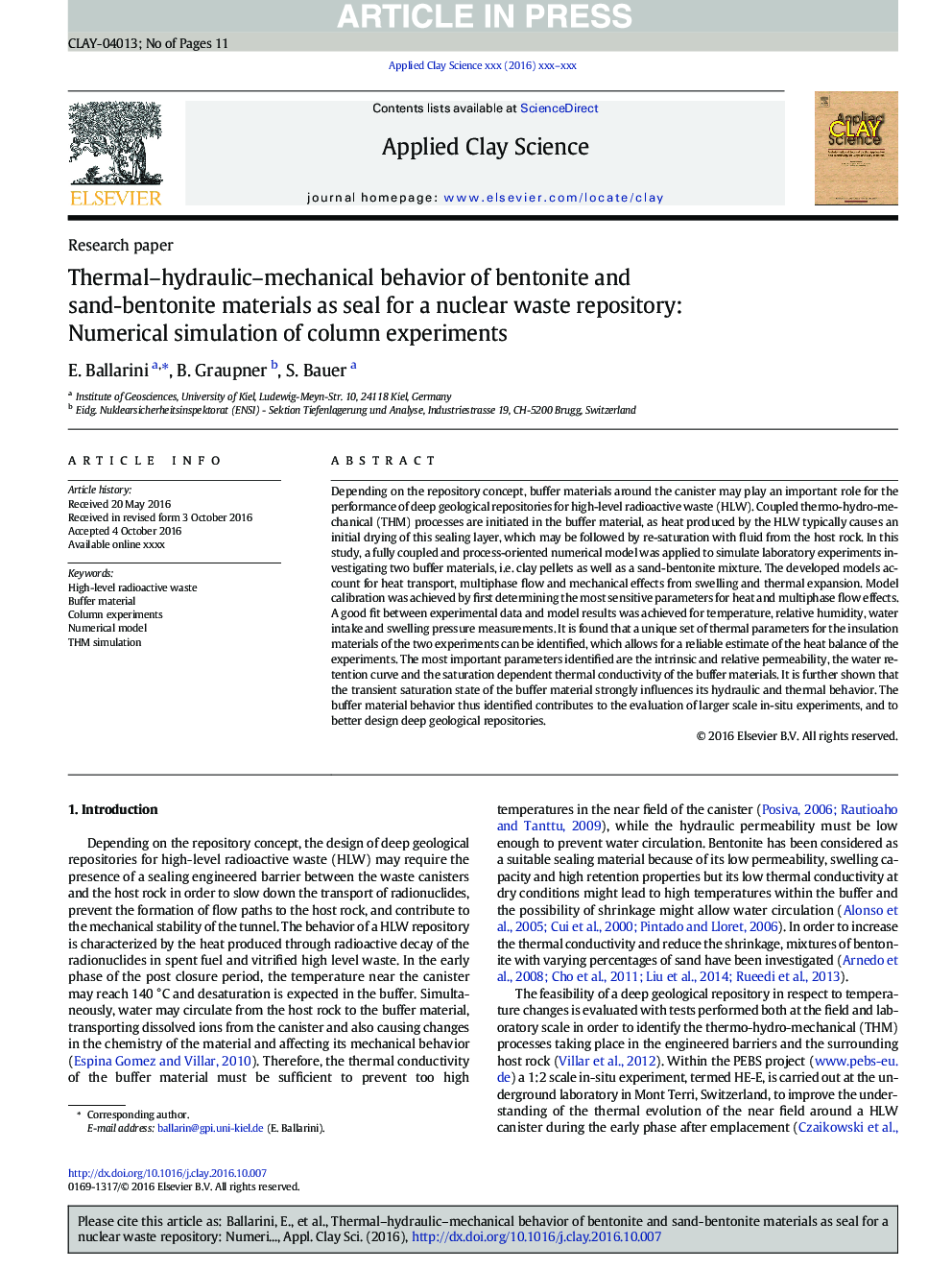| Article ID | Journal | Published Year | Pages | File Type |
|---|---|---|---|---|
| 5468979 | Applied Clay Science | 2017 | 11 Pages |
Abstract
Depending on the repository concept, buffer materials around the canister may play an important role for the performance of deep geological repositories for high-level radioactive waste (HLW). Coupled thermo-hydro-mechanical (THM) processes are initiated in the buffer material, as heat produced by the HLW typically causes an initial drying of this sealing layer, which may be followed by re-saturation with fluid from the host rock. In this study, a fully coupled and process-oriented numerical model was applied to simulate laboratory experiments investigating two buffer materials, i.e. clay pellets as well as a sand-bentonite mixture. The developed models account for heat transport, multiphase flow and mechanical effects from swelling and thermal expansion. Model calibration was achieved by first determining the most sensitive parameters for heat and multiphase flow effects. A good fit between experimental data and model results was achieved for temperature, relative humidity, water intake and swelling pressure measurements. It is found that a unique set of thermal parameters for the insulation materials of the two experiments can be identified, which allows for a reliable estimate of the heat balance of the experiments. The most important parameters identified are the intrinsic and relative permeability, the water retention curve and the saturation dependent thermal conductivity of the buffer materials. It is further shown that the transient saturation state of the buffer material strongly influences its hydraulic and thermal behavior. The buffer material behavior thus identified contributes to the evaluation of larger scale in-situ experiments, and to better design deep geological repositories.
Related Topics
Physical Sciences and Engineering
Earth and Planetary Sciences
Geochemistry and Petrology
Authors
E. Ballarini, B. Graupner, S. Bauer,
